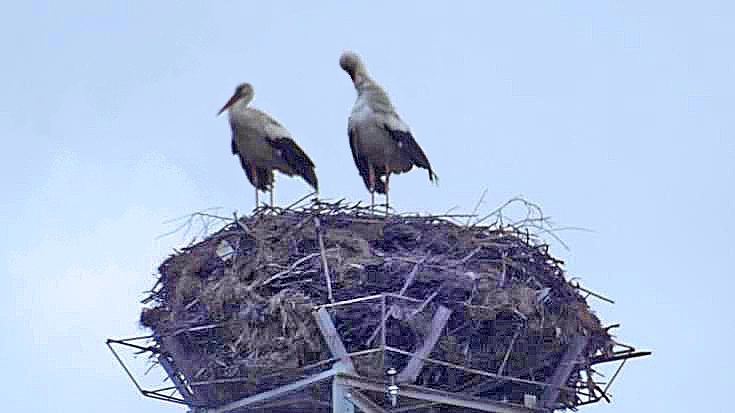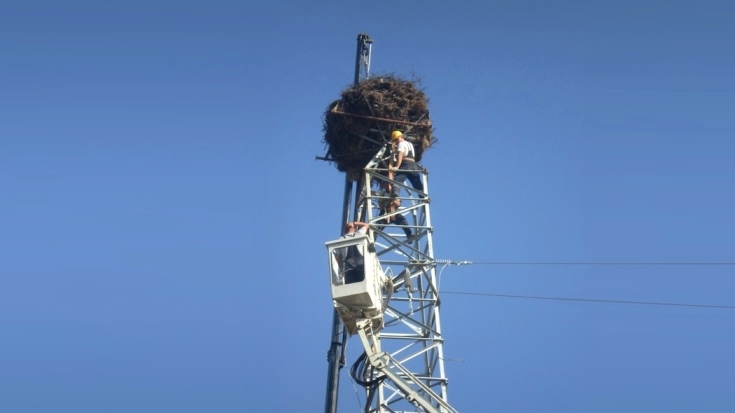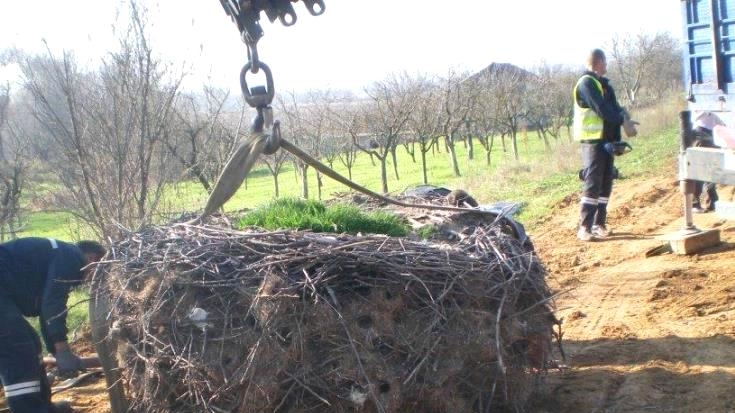The design of this stretch of highway between Vladicin Han and Donji Neradovac in South Serbia, was such that this particular electrical pole – with the stork nest on top of it - was standing in the way of the future motorway.
During the summer and autumn of 2014, construction around the pole was in full swing. But no one was touching the pole. A representative of the Institute for Nature Conservation of Serbia visited the site in July to prepare a preliminary plan for the relocation of the nest. The storks were monitored on a daily basis in anticipation of their migration.
As of mid-November the situation was “clear.”
On November 25, 2014, when the storks were already thousands of miles away in Africa, workers from “ELBA,” a private electrical construction company, began the task of removing the 250 kilos (550 pounds) nest, preserving it, and storing it nearby.
“The idea was to move it to the nearest electrical pole, which was only 30 meters away,” says Branislav Cvetkovic, the owner of ‘ELBA.’
“When we took it down, we were surprised to see how big it was. Its radius was 240 centimeters (93.6 inches) and it was some 80 centimeters (31.2 inches tall). The nearest pole couldn’t support it. So we moved it to the other side of the highway. It was a risky job, since an electrical cable was going right through the nest.”
Cvetkovic himself worked alongside his staff to help reallocate the nest.
He charged nothing for the job.
As of March 21, 2015, the date when spring officially comes in this part of the world, every now and then all eyes would go up to the nest on top of the electrical pole.
Will they come back?
“The concern regarding the storks’ return was felt by all participants – and with good reason, as technical reasons didn’t allow for the nest to be relocated to the pylon which was deemed most suitable”, says Vukica Popadic, an environmental specialist from “Louis Berger,” the supervising consulting firm on site.
And then one day at the beginning of April there was widespread delight.
The storks were back!
“I am particularly happy that we, as the investor in this big infrastructure project, showed particular responsibility in preserving a natural habitat and enabled these beautiful birds to come back to their breeding grounds,” says Darko Subarevic, Deputy Manager of the Corridor X Company’s South Project.
This relocation serves as an excellent example of good practice of an employer - in this case Koridori Srbije - in protecting the natural flora and fauna during the construction of infrastructure corridors in the Republic of Serbia. It is also an example of how issues in construction can be resolved through joint action and cooperation of all parties with no additional cost to the project.
The storks and sparrows will never know any of this.
They are happy to continue flying around Zlatokop.




